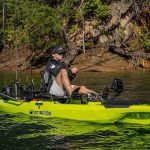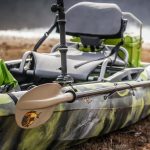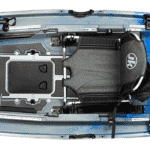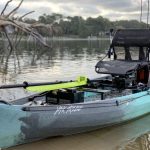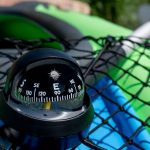Founded in 2016, Bonafide Kayaks is a relative newcomer to the kayak fishing market. 100% made in the USA, their kayaks are known for uncompromised quality and great stability. Let's see what Bonafide Kayaks has to offer in 2023.
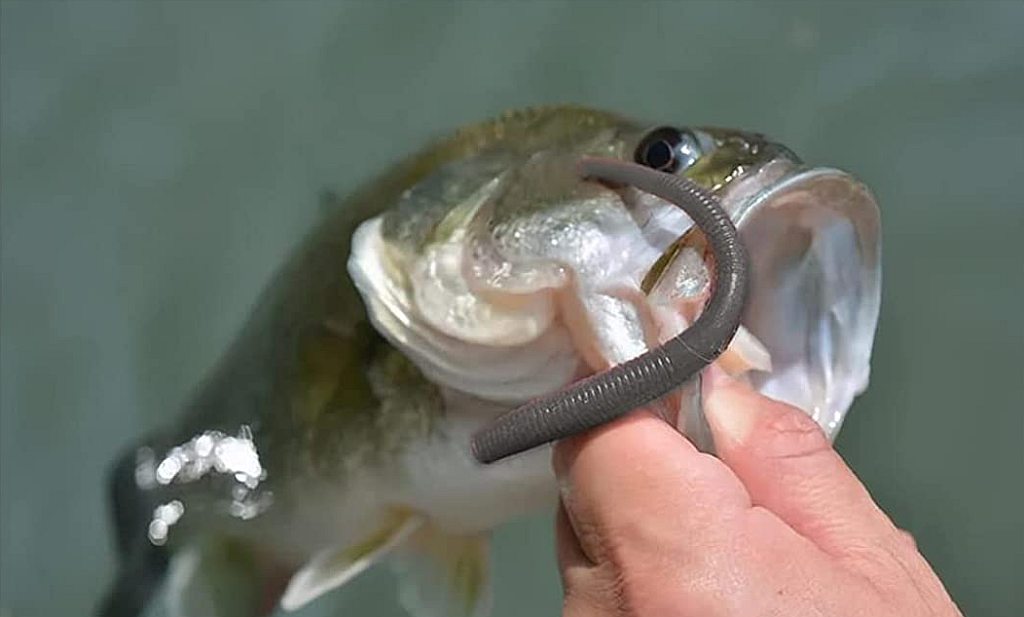
When it comes to bass fishing, there is no shortage of rigs to use. The Texas rig, Carolina rig, Neko rig, and even the drop shot rig stand out as some of the classics.
Over the years, however, the wacky rig has become a very popular way to catch bass.
In this article, you’ll learn which lures, setups, and techniques work best for the wacky rig. With these tips, you will be able to target bass more effectively and expand your arsenal in the tackle box.
What is a Wacky Rig?
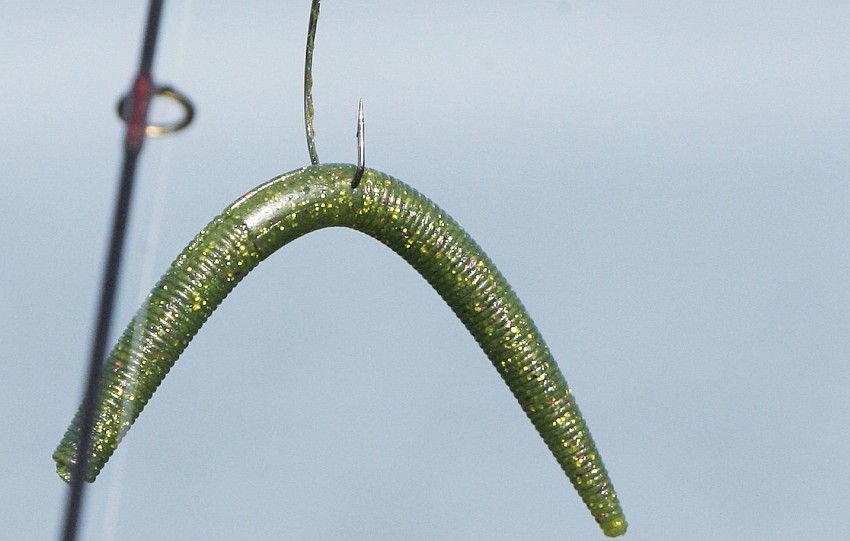
In its simplest form, a wacky rig consists of only two parts: A plastic worm and a hook. The hook is threaded through the middle of the plastic worm perpendicular to its body. This allows either end of the worm to wiggle in a lifelike motion (wacky presentation) as it sinks.
As the wiggling worm slowly enters the strike zone of a bass, the fish can’t help but bite.
What Do You Need to Make a Wacky Rig?
Wacky Worms
First, you need a soft plastic lure suitable for wacky rigging. Not all soft plastic baits are designed to be fished wacky style.
Many wacky rig worms have a nearly symmetrical body shape to allow balance as the bait sinks. These worms, also called stick baits, taper from the center of the body toward the head and tail.
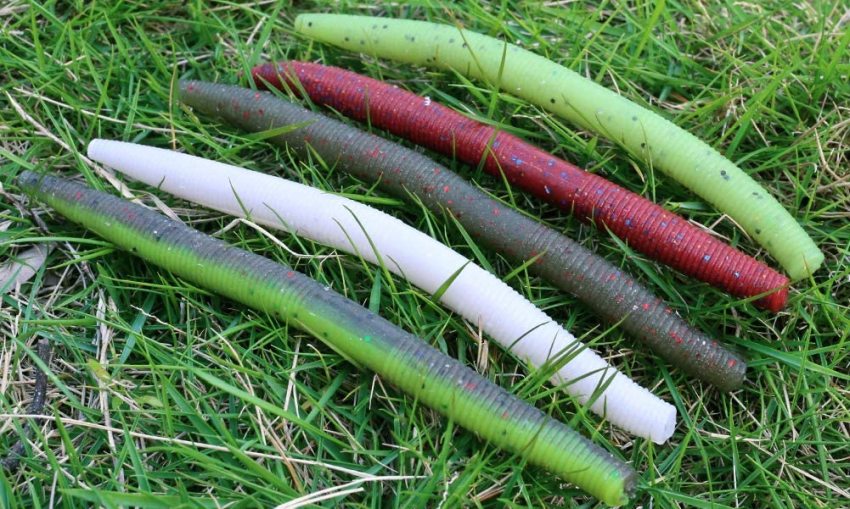
However, some wacky rig worms can have single or even double swim tails at one end to give the bait more action.
The most popular wacky rig worm is probably Gary Yamamoto’s Senko worm. This lure comes in sizes from 3” to 7” and in 100+ colors. I suggest the 5” worm in the Baby Bass and Green Pumpkin Magic colors as a starting point for most beginners.
Other popular wacky worms include:
Wacky Hooks
There are lots of opinions on what hooks to use for wacky rigging, and whether the hook matters at all.
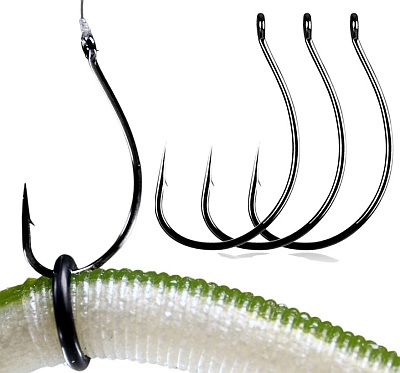
My personal favorite is the Gamakatsu Finesse Wide Gap Hook (I use Size 1 for most 5-inch worms) but in a pinch, any straight-shank hook will work. Sometimes I’d even tie a Gamakatsu EWG offset hook (which I normally use for Texas rigging) and it works just fine.
For fishing in the grass, there are also weedless wacky hooks. Some popular options include Gamakatsu G Finesse Weedless Wacky Hook and Harmony Fishing Razor Wacky Weedless WG Hook.
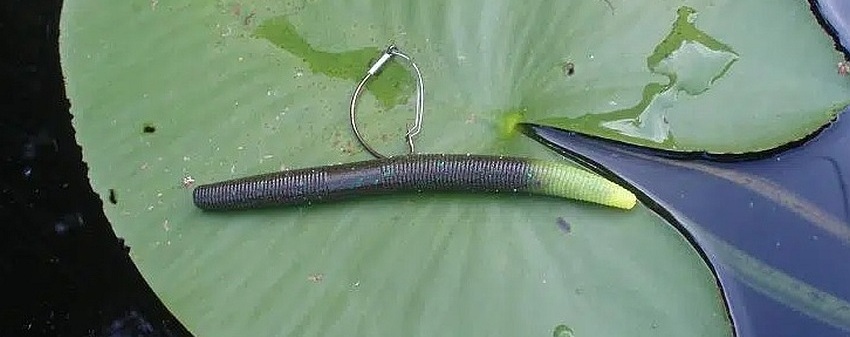
O-Rings and the O-Ring Tool
Many anglers like to use o-rings for their wacky rigs. The o-ring lets you secure the hook to the worm without piercing it, which prolongs the life of the soft plastic.
Since o-rings can be difficult to slide over the body of a stretchy, rubber worm, I recommend using an o-ring tool (also known as the wacky rigging tool). This simple tool lets you place the o-ring right in the middle of your bait.

Weights
On a windy day or when fishing deep waters, you may need to add some weight to your wacky rig. This is usually done with a weighted wacky hook or with a nail weight, but there are specialized wacky weights as well.
A weighted wacky hook comes with a small lead or tungsten weight, just like a jig head.
A nail weight is a small, arrow-shaped weight that’s inserted into the worm’s body through the end.
Remember, however, that the unique action of a wacky worm comes from even weight distribution in the water and can be affected by a nail weight.
A weighted wacky rig will let you make longer casts and get the bait deeper in the water, in front of big bass.
How Do You Set Up A Wacky Rig?
When setting up a wacky rig, first decide how you want to attach the hook to the bait.
For the simplest setup, just thread a wacky hook perpendicular through the middle of a worm – and that’s it.
To extend the life of your plastics, consider using o-rings and the wacky rigging tool.
Load o-rings onto the narrow side of the tool and insert one end of the worm into the hollow end of the tool.
From there, slide an o-ring down the tool until it slips off of the end and grips the worm in the middle.
If you still want your hook to be perpendicular to the worm, criss-cross two o-rings on your worm and thread your hook in the middle. Alternatively, use a wacky saddle.
You’ll need different sizes of o-rings depending on the size of the worm. 5/16″ rings are designed for 4″-6″ long baits, while the large 7/16″ rings are designed for worms 7″ and larger.
Now that the o-ring or wacky saddle is installed, thread your wacky rig hook under it. Use a weedless or weighted hook if needed.
You’re ready to catch some bass!
Best Ways to Fish a Wacky Rig
As you may have guessed, there’s more than one way to fish a wacky rig.
Some of the biggest advantages to bass fishing wacky style is the ability to cast close to structure and to target spooky fish in clear or shallow water.
Many bass, especially big bass, can become sensitive to heavy tackle when specific conditions arise.
Once you’ve decided on the depth to fish and the style of wacky rig, it’s time to start fishing.
Fishing Structure
When it comes to bass fishing, structure is the name of the game. Docks, brush piles, weed lines, and downed trees all provide excellent habitat for bass and the perfect place to catch fish wacky style.
I like to start by casting as close as possible to cover and stay prepared for a reaction strike as the bait slaps the water.
Next, I slackline my bait, allowing it to sink. This method of fishing requires some patience as you wait for the bait to fall into the strike zone underneath the cover of choice.
I’ll know the wacky worm rig has hit the bottom when the line stops moving.
Using the rod tip, I like to give the worm subtle twitches as I slowly reel it in, allowing the bait to drop in between twitches. Strikes with these fishing techniques often come as the bait is falling.
Since there’s little to no tension on the line, a solid hookset is necessary with every hit.
Remember that when pulling bass out of structures, a fast action rod and often heavier line is needed to ensure you’re not losing fish by breaking them off or under-setting.
Choose a medium-heavy or even heavy rod. Some solid options include St. Croix’s Victory Casting Rods and Shimano’s Curado Series Casting Rods.
If I’m not catching fish or notice very few bites, I consider adjusting bait depth. I start by adding just a little bit of weight to the wacky rig if I feel I’m not getting deep enough fast enough.
Remember that the faster the fall, the more action the bait has.
Changing up soft plastic colors can also help catch more fish. As a general rule, darker colors work well in dirty water while lighter colors get more bites in clearer water.
Play around with your setup until you see your fishing success start to improve.
Fishing Shallows
When targeting bass in shallow water, I like to use a weightless wacky rig.
I start by casting beyond where I think the fish might be and slowly reel the rig back, using the tip of the rod to quickly twitch the bait across the bottom.
Since the bait doesn’t have to fall nearly as deep, the retrieve should be faster than when fishing deeper water.
Shallow water can often mean thick vegetation so consider using a weedless wacky rig if you reel in grass and weeds with every cast. Keeping your hook clean of debris will equal a lot more action.
When to Use a Wacky Worm
Knowing how to rig and fish a wacky worm is only part of the equation to catch bass.
Weather conditions, water clarity, and time of year are some of the most important things to consider when fishing.
Weather
Finesse fishing with wacky rigs is my favorite method on calm, sunny days. Lighter line and a weightless wacky worm can be the ticket to catching more bass.
On a windy day, I like to use a weighted wacky rig as it’s easier to cast.
Bass have a tendency to school up in rough, windy conditions and quickly getting your lure to the fish with a weighted rig can be the ticket to success.
Always keep an eye on the barometric pressure too. High-pressure systems or a rising barometer will often make fish reluctant to eat. It’s in these situations that delicate presentations, like the wacky worm, can be deadly.
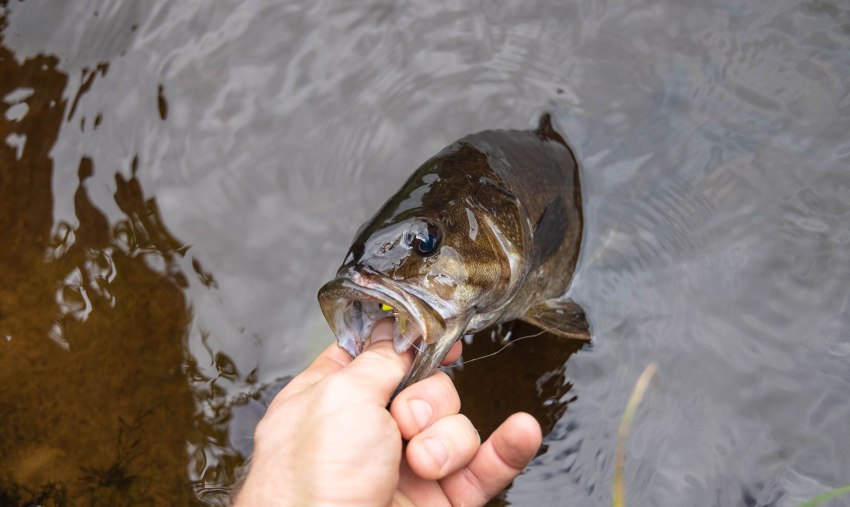
Water Clarity
Clear water is where the wacky worm shines.
Its minimalistic rigging allows the bait to be presented to fish without scaring them. Though this setup will also work in dirty, cloudy water conditions, there are few rigs that work as well when it’s clear.
When fishing in clear water line selection becomes more important than ever. I feel that using fluorocarbon lines in these situations is a must.
My personal favorite fluorocarbon options are Seaguar Red Label and Seaguar InvizX in 8-10lb.
Fluorocarbon is great in these situations thanks to its abrasion resistance, invisibility underwater, low memory, and its fast sinking qualities.
Time of Year
Whether I’m fishing for bass in shallow water or deeper pockets all depends on the time of year.
Spawning events in springtime drive bass to bed up in the shallows, allowing a perfect opportunity to target them with wacky rigs. In addition, bass tend to move into shallow water in the fall in order to feed and bulk up for the winter months ahead.
But what about the cold months?
Colder water temperatures will force bass into deeper pockets of water. They will be more lethargic in these colder temperatures and a wacky worm’s slow, subtle action is the perfect way to hook into an otherwise reluctant fish.
FAQ
Unlike most fishing rigs that involve hooking a bait through the head, wacky rigs are hooked through the middle. Its unique look and action make this rigging “wacky”.
Wacky worm rigs are primarily used to target Largemouth and Smallmouth bass. Some anglers report limited success with some saltwater species such as Redfish and Speckled Trout.
Larger-sized wacky worms can be more effective at night than a smaller size. The bigger profile is easier for a bass to pick out in the low-light conditions.
For smaller-sized 4″-5″ worms stick with Size 1 or 1/0 hooks. For larger-sized lures bump up to 2/0 or bigger.
8-10lb fluorocarbon is ideal for fishing the wacky rig due to its abrasion resistance and near invisibility underwater. To add, fluorocarbon sinks faster than monofilament and can help sink your bait faster. I prefer a 2500 or 3000 size spinning reel, but lots of anglers use casting reels with great success.

